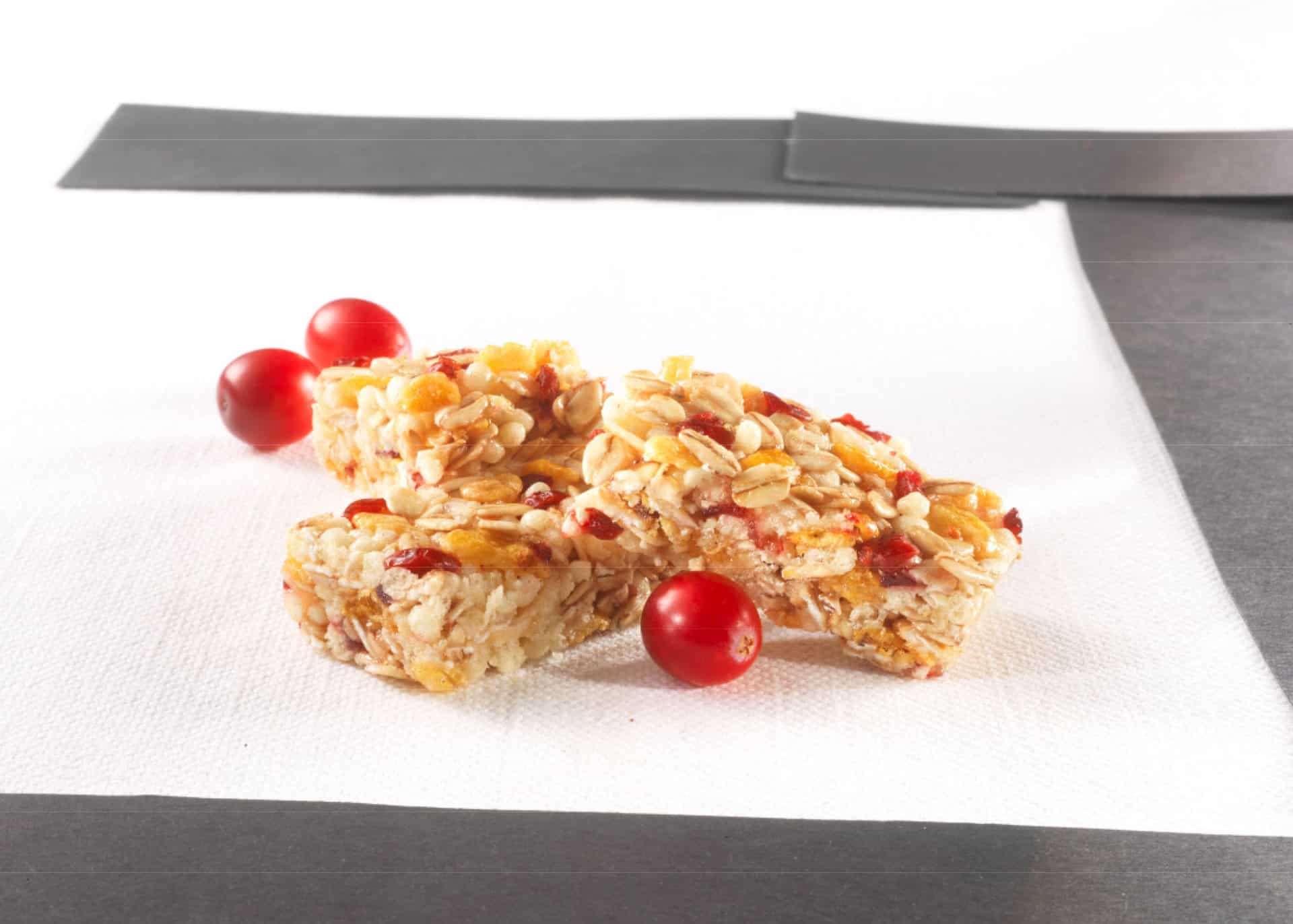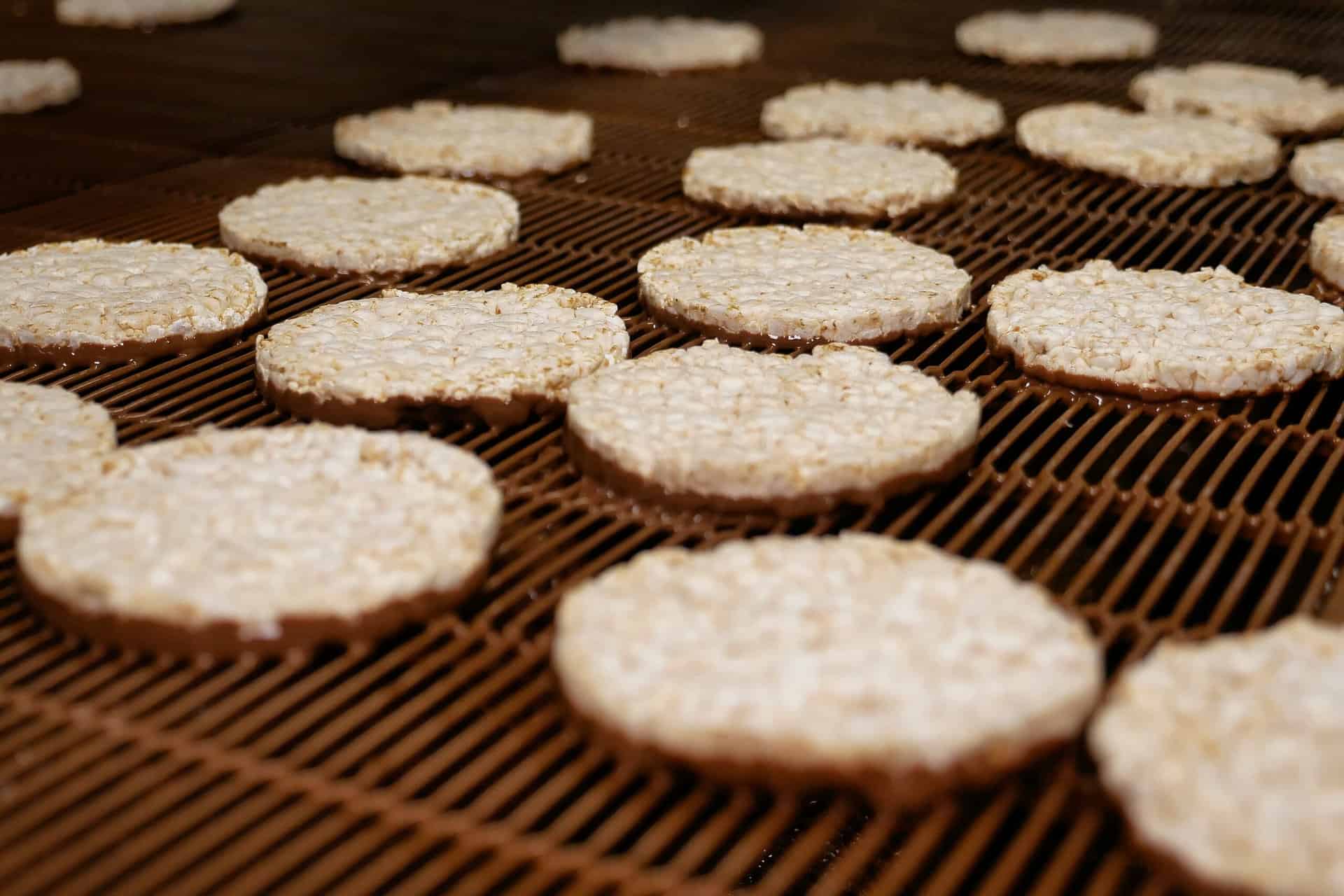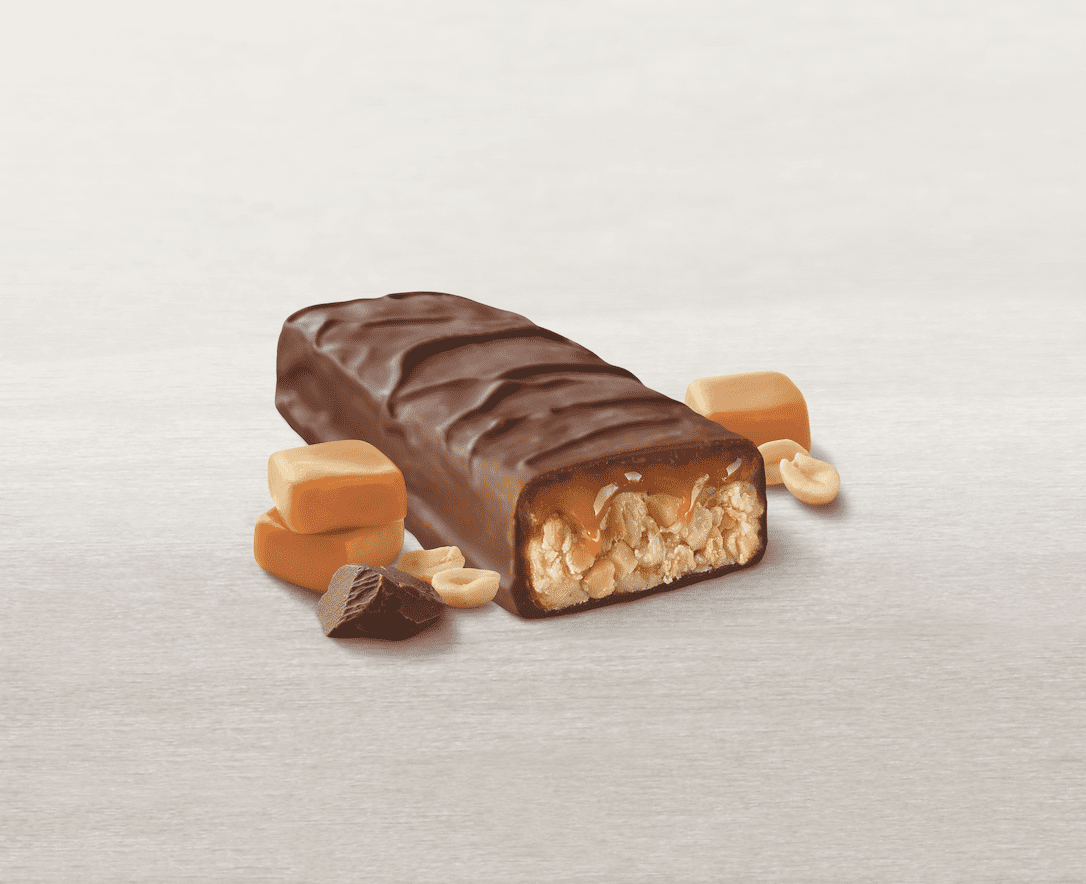The dry components of the bar consist of grain flakes and extrudates and, depending on the recipe, nuts or fruits, for example. They are mixed with a warm, liquid sugar-based binder, formed into bars and then cooled. We can also run the bars through a chocolate foot bath before cooling down. Or we decorate the surface with a decoration, usually made of white or dark chocolate.


Muesli Bars

Cereal Bars
The cereal bars are made like muesli bars, but the grain content here consists only of flakes or extrudates, so that these bars are even lighter and airier. Decors or feet made of chocolate are also possible here.

Fruit Bars
The majority of our fruit bars consist of dried fruit kneaded with fruit concentrates and honey. A subsequent shaping and encasing in two wafers completes the production. The fruit bars do not require the addition of granulated sugar.
Very pure recipes consist of only a few ingredients, for example dates and cashew nuts or just apples and pears.
Many recipes are also possible without wafers. The fruit slices can also be provided with a second layer (e.g. crunchy pieces). Full or partial chocolate coating can also take place.

Baked Bars
Similar to biscuits, a dough is formed for the baked bars, which is then baked. The result is a crispy, tender bar.

Rice Waffles
Small pieces of rice grains are filled into round molds and puffed up by rapid heating – similar to popcorn. The subsequent refinement with chocolate or a yoghurt glaze makes them even tastier.

Protein Bars
The typical protein bars have animal components such as milk proteins, collagen and gelatine as the main protein source. These proteins are particularly easy for the body to utilize. The protein content is usually 20-30%. The raw materials are kneaded and shaped.
Depending on the recipe, a second layer on the protein mass is also possible – for example a caramel layer. At the end, the bars are often coated in chocolate.
Our protein bars are often made with no added sugar and are low in carbohydrates. They are good for a low carb diet.
